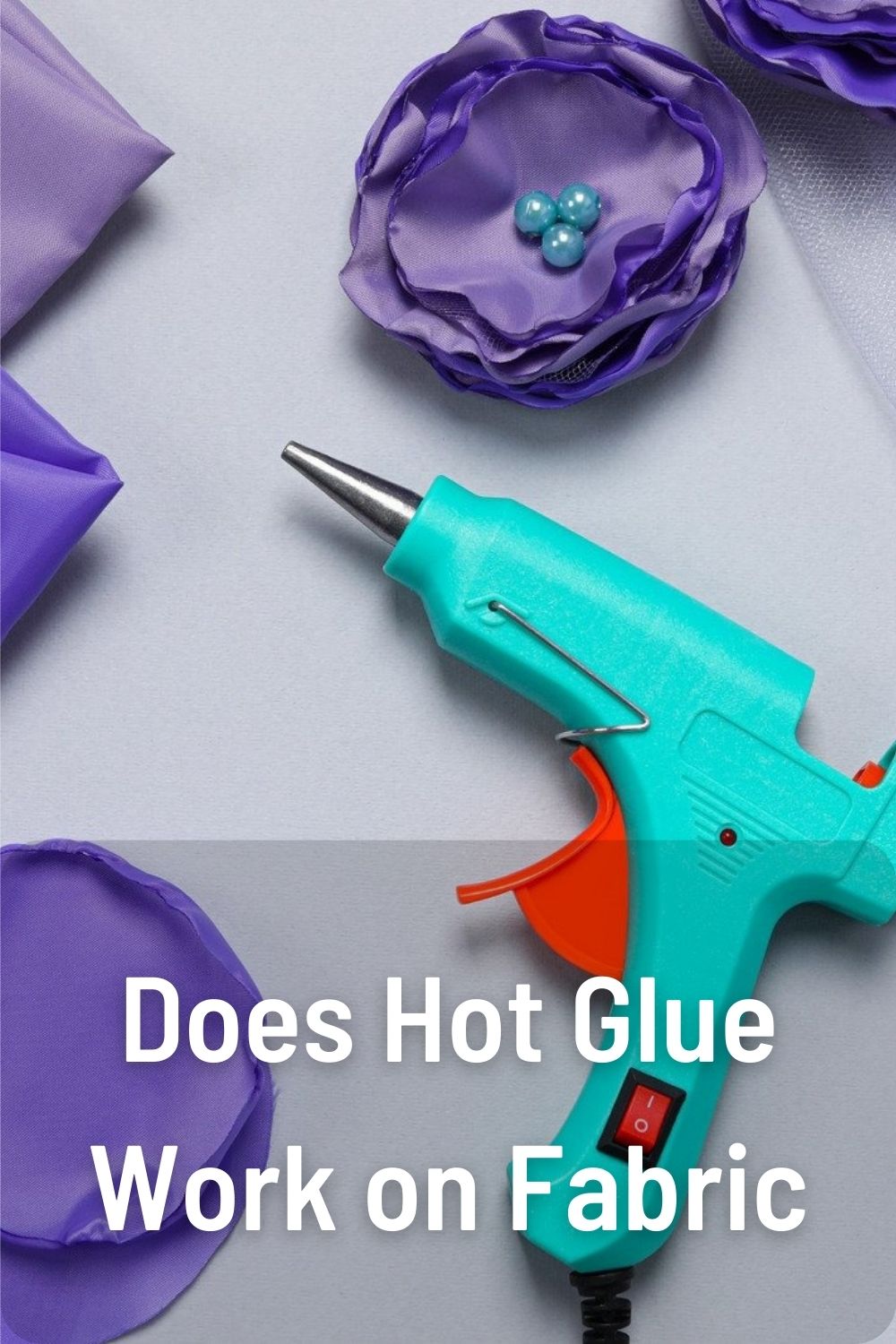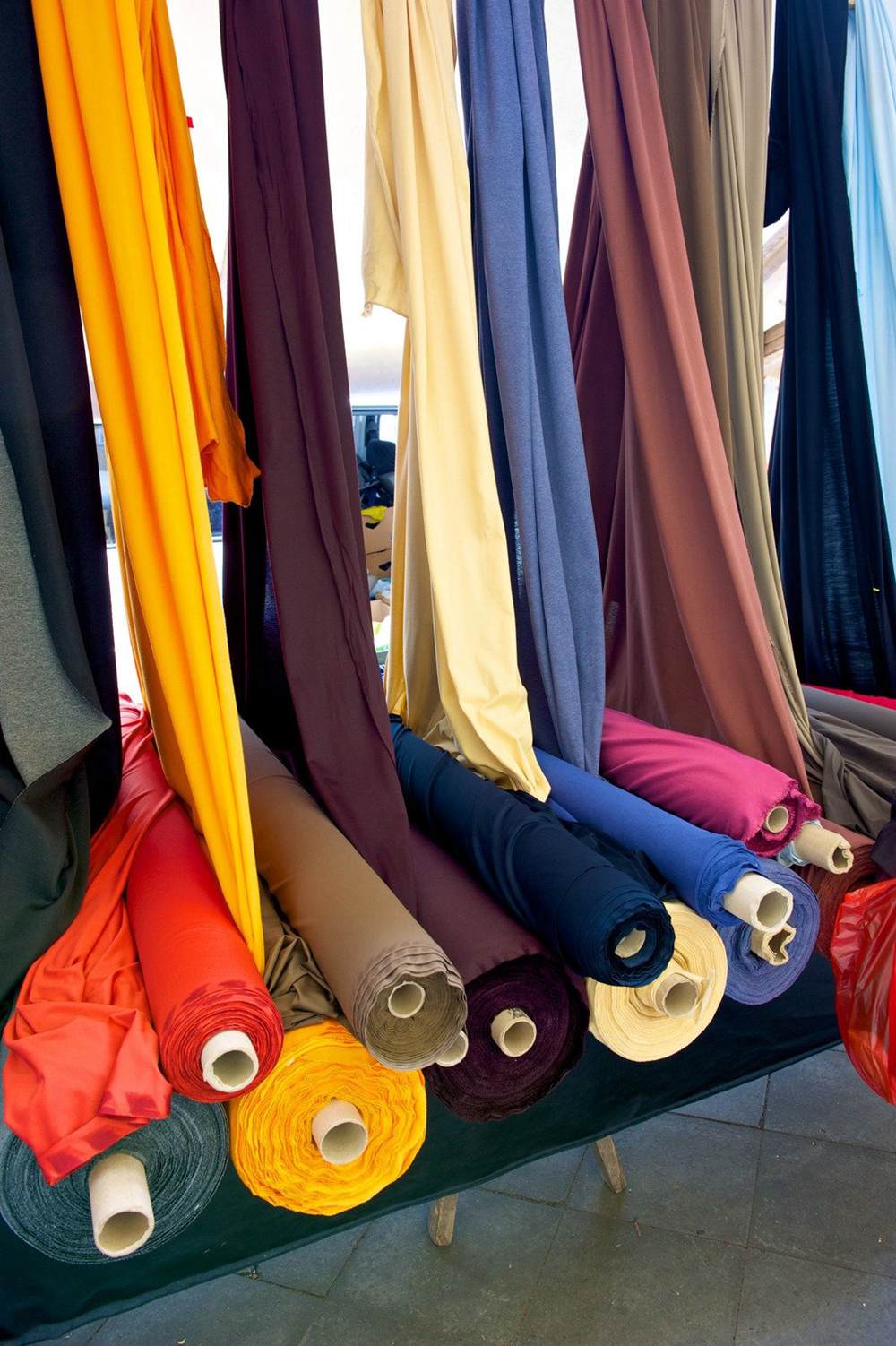
Hot glue can be a quick and easy way to attach fabrics and other materials together. But does it actually hold up over time? Can hot glue be used on all types of fabric?
Table of Contents
How Hot Glue Bonds to Fabric
Hot glue contains thermoplastic polymers that become liquid when heated to high temperatures. As the glue cools and solidifies, it forms strong adhesive bonds with porous materials like fabric.
The glue seeps into the fibers of the fabric, creating a mechanical and physical bond. This is different from liquid glues that rely solely on chemical adhesion.
Hot glue forms immediate strong bonds with fabric. But the long-term durability depends on the type of fabric, glue gun settings, and environmental factors.
What Fabrics Does Hot Glue Work On?

Hot glue can work on most types of fabric if used properly. Here are some of the best fabrics to use hot glue on:
- Cotton – The natural fibers have a porous, textured surface that hot glue can grip onto. Make sure the cotton is not treated or coated.
- Linen – Like cotton, linen is made from natural fibers that allow hot glue to mechanically adhere. Avoid treated linens.
- Wool – Wool has a fibrous surface that anchors hot glue well. Be careful of temperature settings.
- Silk – Pure silk fabric can be effectively glued with hot glue. Just go slowly to avoid damaging the delicate material.
- Burlap – The coarse, open weave of burlap makes it ideal for hot gluing. The glue grips onto the jute or polypropylene fibers.
Some fabrics that don’t work as well with hot glue include:
- Synthetic fabrics like polyester, nylon, spandex, and microfiber. The smooth surfaces prevent effective bonding.
- Suede leather lacks porous fibers for the glue to grab onto. Faux suede is typically made from synthetic microfibers.
- Vinyl and plastic fabrics since hot glue won’t bond to the non-porous surfaces.
Always test a small area first when using hot glue on a new fabric.
How Different Fabrics Hold Up Over Time
| Fabric | Initial Bond | Long-Term Durability |
|---|---|---|
| Cotton | Very strong | Good if glue fully permeates fibers |
| Wool | Strong | Fair, depends on glue amount |
| Silk | Moderate | Fair, light glue recommended |
| Linen | Very strong | Good if glue fully permeates fibers |
| Suede | Weak | Poor, glue won’t penetrate surface |
| Burlap | Very strong | Excellent, glue binds to coarse fibers |
| Synthetic | Weak | Poor, lacks porous surface |
| Vinyl/Plastic | None | None, cannot bind to non-porous |
Tips for Using Hot Glue on Fabric
Follow these tips when gluing fabrics to get the strongest, longest-lasting bonds:
- Use high-temp glue guns that reach 380°F. This allows the glue to fully liquefy and penetrate fabric fibers.
- Go slowly and carefully squeeze the glue gun trigger to fully saturate the fabric without creating excess buildup.
- Apply pressure for 30-60 seconds as the glue cools and solidifies. This helps the glue thoroughly bond to the fabric.
- Use adequate ventilation so you don’t inhale fumes. Work in a well-ventilated area.
- Avoid treating fabrics before gluing. Chemical coatings and special treatments can repel hot glue.
- Be extra careful with delicate fabrics like silk. Use lower temp glue guns and less glue to prevent damage.
- Let it fully cure for at least 24 hours before exposing the bond to any force or moisture.
- Do test bonds on scrap fabric to adjust the glue gun temperature and glue amount.
Following these basic tips will result in the strongest hot glue bonds on fabric that hold up over time.
Hot Glue Alternatives for Fabric
While hot glue works on most fabric types, you may want to consider alternative adhesives for certain situations:
- Fabric glue – Liquid glues specifically designed for bonding fabric can provide flexible, permanent bonds. Great for delicates.
- Super glue – Can be used on fabrics like felt, leather, and vinyl when you need fast bonding time. Provides a stiff bond.
- Spray adhesives – Mess-free and create an instant bond. Best for temporary bonds rather than permanent ones.
- Stitching – For critical projects, hand or machine stitching provides the most durable fabric bonds. No adhesives needed.
- Iron-on adhesives – Fusible bonding webs and tape create permanent bonds when activated with heat. Simple to use.
- Safety pins – A temporary solution for quickly bonding fabric without adhesives. Best for non-critical bonds.
Consider the characteristics of the project when deciding which adhesive to use on fabrics. Hot glue is quick and convenient but may not be the best choice for every situation.
Is Hot Glue Waterproof on Fabric?
Hot glue provides a water-resistant bond on fabric, but it is not 100% waterproof. With exposure to moisture over time, hot glue can soften and lose adhesion.
Here are some tips for making hot glue as water-resistant as possible on fabrics:
- Use a high-temp glue gun (over 375°F) so the glue fully melts and seeps into the fabric.
- Apply a smooth, even layer of glue without gaps or buildup. This prevents water from seeping underneath.
- Let the glue fully cure for at least 24 hours before exposing to moisture.
- Apply a layer of clear glue sealant over the dried hot glue. This adds extra water protection.
- Avoid delicate silks and thin cottons which absorb water easily. Opt for medium-weight cottons or water-resistant fabrics like burlap.
- Expect to reapply glue after continuous exposure to moisture. Hot glue’s water resistance decreases over time.
For truly waterproof bonds on fabric, use a specialty fabric glue made for outdoor use or a sewn seam sealant. Hot glue works best for intermittent indoor use.
How to Remove Hot Glue from Fabric
Despite hot glue’s strong hold on fabric, it can be removed when needed. Here are some methods:
- Slowly peel off cooled hot glue. Try not to rip or distort the fabric. Any remnants can be rubbed off.
- Use tweezers to grab and pull off glue globs. Take care around delicate fabrics.
- Apply rubbing alcohol or nail polish remover to soften the glue, then gently rub off. Test first to ensure colors don’t bleed.
- Scrub with baking soda mixed into a paste. The abrasive texture helps scrub off leftover glue residue.
- Press with an iron on medium heat. The hot iron remelts the glue, allowing you to peel it away while hot.
- Use steam from an iron or garment steamer to loosen glue bonds. Then wipe away softened glue.
- Wash in laundry to remove traces of glue from sturdy fabrics like cotton. Use hot water and extra rinse cycles.
Go slowly when removing hot glue from fabric to avoid damaging the material underneath. With some patience, it can be done without harming the fabric.
Frequently Asked Questions
Does hot glue work on all fabrics?
No, hot glue does not work well on all fabric types. It bonds best to natural fabrics like cotton, wool, and linen. Synthetic fabrics often lack the porous structure for strong hot glue bonds. Do a test first on a fabric scrap before glueing the actual fabric.
Is hot glue permanent on fabric?
On natural fabrics like cotton and linen, hot glue forms a permanent bond if allowed to fully cure. On more delicate fabrics like silk, or outdoors exposed to moisture, hot glue may break down over months or years. For a permanent fabric glue, use a specialty adhesive made for fabrics.
Can you wash fabrics glued with hot glue?
Washing machine washing is not recommended for hot glued fabrics. The agitation and water exposure will likely weaken or dissolve the bonds over time. Dry clean or spot clean fabrics that have been assembled with hot glue. Or make sure to only glue areas that will not require washing.
Does hot glue leave a stain on fabric?
In most cases, hot glue does not leave a stain on fabric after being removed. But excess glue residue or melted glue may discolor delicate fabrics like silk and light-colored cottons. Rubbing alcohol can help remove any staining after the glue is gone. Always test a small inconspicuous area first.
Is hot glue toxic when used on fabrics?
Hot glue guns produce fumes that can be inhaled when heated to high temperatures. Work in a well-ventilated area and avoid breathing the fumes. Once fully cooled and solidified, the hot glue bonds are non-toxic and food safe. There are no chemicals or toxins that leach from the cured glue.
Conclusion
Hot glue can create quick, functional bonds on a variety of fabrics. While not appropriate for every situation, it does have many uses in fabric projects from home decor to clothing repairs.
With some practice using the right techniques for your fabric type, hot glue can produce long-lasting bonds that hold up to daily use. Just remember to account for the limitations and consider alternative adhesives when needed.